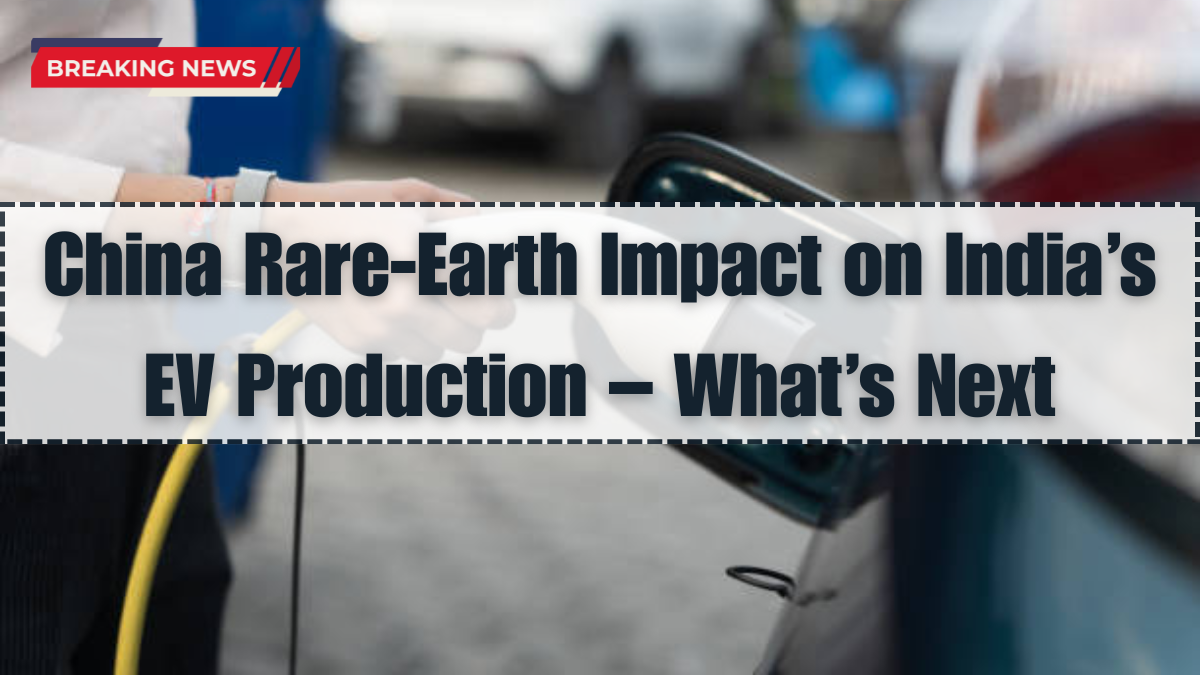The rare earth shortage triggered by China’s recent export restrictions has sent ripples across India’s electric vehicle (EV) ecosystem. As the world’s dominant supplier of rare-earth elements—key to EV motors and batteries—China’s tightening of supply has exposed India’s heavy dependency on imported materials. The result: Indian auto manufacturers are being forced to explore alternative supply chains, local mining, and rare-earth substitutes to sustain EV production.
India’s auto sector, which has rapidly adopted electrification, now faces a strategic challenge. The EV supply chain is deeply reliant on neodymium, dysprosium, and other rare-earth elements used in permanent magnet motors—vital for performance and efficiency. With limited domestic production, the impact is being felt across both EV startups and established manufacturers.

Why Rare Earth Elements Matter in EVs
Rare earth elements play a central role in making EVs light, powerful, and efficient. Here’s how they are used:
-
Neodymium magnets: Found in EV motors, offering high torque and energy efficiency
-
Lanthanum and Cerium: Used in battery alloys and catalysts
-
Dysprosium: Helps improve the heat resistance of magnets used in electric motors
-
Praseodymium: Used to enhance magnetic properties in motor coils
The current rare earth shortage affects both two-wheelers and four-wheelers, especially models relying on permanent magnet synchronous motors (PMSM).
How Indian EV Manufacturers Are Reacting
Auto-makers in India are already feeling the squeeze and are adapting in several ways:
-
Switching to induction motor technology to avoid rare-earth dependency
-
Partnering with non-Chinese suppliers like Vietnam and Australia
-
Investing in domestic rare-earth mining in Andhra Pradesh and Odisha
-
Researching synthetic alternatives and recycling rare-earth materials from e-waste
Companies like Tata Motors and Mahindra have already begun adapting motor technology in their newer models to reduce reliance on rare earth imports. EV startups are also shifting towards non-rare-earth-based drivetrain technologies.
Government Strategy to Tackle Rare Earth Crisis
The Indian government is taking swift steps to protect the EV supply chain:
-
Revival of state-owned Indian Rare Earths Limited (IREL) to boost domestic exploration
-
PLI scheme extensions to include motor and magnet manufacturing
-
Mining rights allocation for private firms in key states
-
Strategic partnerships with Japan and Australia for raw material access
The Ministry of Mines and the Ministry of Heavy Industries are working closely to ensure that the rare earth shortage does not derail India’s EV growth ambitions.
Outlook for the Industry Amid Supply Disruption
While the pressure from China’s export curbs is real, the Indian EV sector remains resilient. Manufacturers are innovating, policymakers are reacting quickly, and the global supply diversification effort is underway. Most importantly, the disruption has highlighted the importance of supply chain independence and domestic capability building.
FAQs
What are rare earth elements, and why are they crucial for EVs?
Rare earths like neodymium and dysprosium are essential for EV motor magnets and battery performance due to their high magnetic and thermal properties.
Why is there a rare earth shortage in India?
China, which controls over 80% of global rare-earth exports, has restricted shipments, affecting supply to countries like India.
How are Indian auto manufacturers responding to the shortage?
They are switching to alternative motor technologies, securing new suppliers, and investing in local rare-earth mining.
Is the Indian government doing anything about the shortage?
Yes, initiatives include expanding mining operations, forming global partnerships, and revising the PLI scheme to support domestic production.
Will this shortage slow down EV production in India?
While it poses challenges, manufacturers are actively adapting. EV production continues with evolving motor tech and alternative material sourcing.
Click here to know more.

